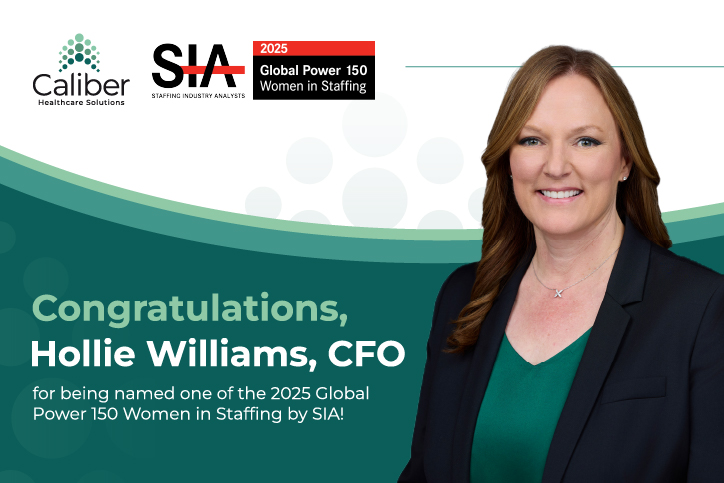
The role of anesthesiology is evolving—fast. As the complexity of care increases and the settings in which anesthesia is delivered expand, Anesthesiologists are stepping into broader roles across surgical suites, ambulatory centers, ICUs, pain clinics, and interventional care.
But while the need for anesthesia professionals is growing, the workforce isn't expanding at the same pace. For both providers evaluating career opportunities and healthcare leaders planning future coverage, understanding the Anesthesiologist job outlook is essential.
Here’s where demand is headed—and how flexible staffing models, like locum tenens, are helping bridge the gap.
The U.S. Bureau of Labor Statistics projects a 3% growth rate for physicians and surgeons—including Anesthesiologists—between 2023 and 2033. While this may appear modest on paper, it doesn’t tell the whole story.
Behind this average growth rate are multiple forces driving sustained—and increasingly diverse—demand for anesthesia care:
This growth isn't only about volume. It's about flexibility, specialization, and access—and Anesthesiologists are uniquely positioned to deliver all three.
While general anesthesiology remains in demand, subspecialists are carving out new lanes of opportunity in both urban and rural settings. Areas like:
These areas offer not only clinical depth, but also broader career longevity. As hospitals and surgical centers expand their service lines, the need for focused anesthetic expertise is rising—creating a wider array of practice environments and career pathways.
Anesthesia isn’t just for the OR anymore.
Ambulatory Surgery Centers (ASCs) and pain management clinics are growing rapidly, offering high-volume, cost-efficient alternatives to inpatient procedures. This creates more flexible, often lower-acuity opportunities for Anesthesiologists—but also intensifies demand for fast, adaptable staffing.
At the same time, rural hospitals and critical access facilities face widening gaps in full-time anesthesiology coverage. These locations often can’t support the overhead of a full anesthesia team but still need reliable coverage for surgeries and obstetric care.
In both cases, locum tenens Anesthesiologists offer a practical solution—helping facilities manage volume spikes, leave coverage, and transitions in recruitment while giving providers more freedom in where and how they practice.
As the number of Certified Registered Nurse Anesthetists (CRNAs) grows, healthcare systems are adapting with collaborative care models. In many facilities—especially in rural areas—Anesthesiologists and CRNAs work side by side, each bringing distinct strengths to the patient experience.
While CRNAs can often operate independently depending on state laws, Anesthesiologists retain a critical role in leading complex cases, overseeing anesthesia care teams, and managing high-risk patients. Their background in perioperative medicine, critical care, and pharmacology uniquely equips them for cases that fall outside standard protocols.
The rise of the CRNA workforce doesn't shrink opportunities for Anesthesiologists—it reshapes them. Health systems increasingly rely on Anesthesiologists for leadership, training, supervision, and advanced specialization. For Anesthesiologists seeking impact, collaboration, and intellectual challenge, the outlook remains strong.
Anesthesiologists today want more than job security—they want control. Locum tenens provides a flexible career path that allows Anesthesiologists to:
Whether you're early in your career or exploring post-retirement options, locum tenens offers a way to stay clinically engaged without locking into a single role. You can also use locums to supplement a permanent job, help pay off medical school debt faster, or test new work settings (like ASCs or pain clinics) without risk.
For hospitals, ASCs, and specialty groups, the Anesthesiologist job outlook presents both opportunity and pressure. You may be:
Locum tenens Anesthesiologists provide a dependable way to maintain continuity without compromising care. At Caliber, we connect clients with skilled providers who match your exact setting—whether that’s trauma-level care, regional blocks in an ASC, or high-volume labor and delivery. Our credentialed providers are experienced, efficient, and ready to integrate seamlessly into your care team.
While the projected 3% growth rate may seem modest, the real Anesthesiologist job outlook is far more dynamic. It’s about:
Whether you’re a provider seeking career autonomy or a healthcare leader building a resilient staffing model, the path forward is clear: the field of anesthesiology isn’t shrinking—it’s diversifying.
At Caliber, we help Anesthesiologists and healthcare organizations navigate the changing landscape—together. Our specialty-driven recruitment teams connect the right providers with the right assignments, ensuring better outcomes for patients and more flexibility for everyone involved.
If you’re ready to take advantage of new opportunities—or you need anesthesia coverage you can count on. Caliber is here to help; let’s meet demand, without compromise.

Posted on
October 9, 2025
Caliber is proud to announce that our Chief Financial Officer, Hollie Williams, has been named to the Staffing Industry Analysts (SIA) 2025 Global Power 150 Women in Staffing list. This prestigious recognition honors women who are shaping the future of the staffing industry through innovation, leadership, and measurable impact.

Posted on
August 14, 2025
The OB/GYN workforce is at a pivotal moment. Demand is growing, especially in underserved regions. Meanwhile, retirements, burnout, and legislative pressure continue to shrink the supply of practicing physicians.

Posted on
August 10, 2025
The U.S. is experiencing a growing OB/GYN shortage that’s reshaping access to care for millions of women. In rural and urban communities alike, hospitals are closing labor and delivery units.

Posted on
October 9, 2025
Caliber is proud to announce that our Chief Financial Officer, Hollie Williams, has been named to the Staffing Industry Analysts (SIA) 2025 Global Power 150 Women in Staffing list. This prestigious recognition honors women who are shaping the future of the staffing industry through innovation, leadership, and measurable impact.

Posted on
October 2, 2025
We are proud to announce Allie Taylor, Corporate Counsel at Caliber Healthcare Solutions, has been recognized as a finalist for D CEO’s 2025 Corporate Counsel Award. Now in its 16th year, this prestigious program honors the top in-house attorneys across North Texas—an achievement that speaks volumes about Allie’s remarkable impact in the legal field.

Posted on
August 10, 2025
At Caliber, we believe Locum Tenens Week should be more than a weeklong celebration; it should be a spotlight on the long-term difference providers make every day. As a provider-centric organization, we know that when physicians and APPs are supported, their impact doesn’t just fill a gap, it transforms care for entire communities.This year’s NALTO theme, “Temporary Providers, Permanent Impact,” resonates deeply with us. Because while locum assignments are sometimes measured in weeks or months, the care delivered, and the trust built can span years and touch thousands of lives.

Posted on
August 8, 2025
A growing shortage of Anesthesiologists is reshaping the surgical landscape—impacting patient access, facility operations, and physician well-being.

Posted on
August 4, 2025
Anesthesiology is one of the highest-paying physician specialties in the U.S., offering a strong financial foundation alongside a range of career paths.

Posted on
August 11, 2023
Healthcare facilities across the United States are facing a shortage of qualified anesthesiologists. According to the American Society of Anesthesiologists, the shortage is expected to persist for the foreseeable future. As a result, healthcare providers increasingly turn to locum tenens staffing solutions to meet their staffing needs.

Posted on
August 14, 2025
The OB/GYN workforce is at a pivotal moment. Demand is growing, especially in underserved regions. Meanwhile, retirements, burnout, and legislative pressure continue to shrink the supply of practicing physicians.

Posted on
August 12, 2025
Physicians in 2025 are facing rising workloads, shifting care team structures, and evolving career expectations. See the 4 biggest trends shaping the profession—and how locum tenens offers flexibility, balance, and control.

Posted on
August 12, 2025
For OB/GYNs, compensation is only one part of a complex equation that includes work-life balance, autonomy, and the ability to practice medicine on your own terms.